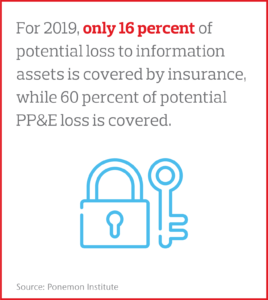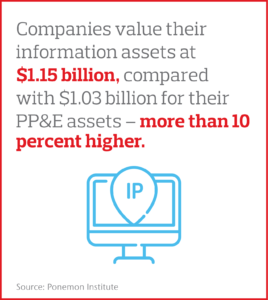Intellectual Property: Learning To Value Assets You Can’t Touch
OVERVIEW
$1 trillion: that’s the combined value of the top three of the world’s most valuable brands. Put it another way, that’s about the same size as the economy of Australia.
With tech behemoths Amazon, Apple and Google leading the pack, it’s no surprise that what makes up a business’s value has shifted over recent decades.
Increasingly, intellectual property, also known as intangible assets or information assets (such as brand, patents and trade secrets), are outpacing tangible ones (such as property and equipment) as the primary sources of corporate value. Continued technology-fueled innovation has also contributed significantly to the rise in value of these intangible assets and changed the nature of many businesses. Salesforce’s recent $15.70 billion acquisition of data-visualization company Tableau is another indicator that a critical source of value is increasingly intangible.
“If we look at today’s top companies, it’s clear: innovation commands a premium. The challenge for many organizations is how best to quantify and value it,” says Lewis Lee, chief executive officer of Intellectual Property Solutions at Aon. “Understanding the market value of a patent or trade secret portfolio can allow companies to maximize the financial value of their innovations.”
However, as intangible assets become more valuable, many have a difficult time quantifying that value – and protecting it.
IN DEPTH
Intangible assets are generally defined as assets without physical substance, such as high-value intellectual property: brand, patents and trade secrets.
Despite the growing importance of wide-ranging intangible assets as sources of innovation and revenue, many companies find it difficult to value and protect them appropriately. “Research shows that organizations need to improve their understanding of the value of information assets,” says Jesus Gonzalez, deputy global practice leader at Aon. “Today, there’s no formal standard for valuing intangible assets, but strides are being made toward forming a standard aimed at providing more efficient IP valuation.”
Businesses Acknowledge IP’s Value – Still, A Protection Gap Exists
While there are difficulties in quantifying the value of IP, business leaders are acknowledging the growing importance of the asset to their organizations.
At the same time, there’s a massive difference in the ways leaders’ efforts to >protect these intangible assets versus the tangible ones – such as property, plant and equipment (PP&E) – says Larry Ponemon, chairman and founder of the Ponemon Institute.
According to the Ponemon Institute’s “2019 Intangible Assets Financial Statement Impact Comparison Report,” companies value their information assets at $1.15 billion, over 10 percent more compared with $1.03 billion for their PP&E assets. And when companies estimate probable maximum losses (the largest loss that could result from a disaster) they also value the loss of information assets higher, at $1.08 billion versus $796.00 million for lost PP&E assets.

Yet companies seem to address risks to physical assets more diligently than those related to IP. Survey respondents to the Ponemon Institute’s report noted that for 2019 only 16 percent of their potential loss to information assets is covered by insurance, while 60 percent of potential PP&E loss is covered.
Further adding to the asset-protection imbalance, more than a quarter of the companies surveyed have been through an event in the past two years that has hurt IP – such as trade secrets, copyrights or patents – all possibly leading to balance-sheet losses in the short or long term.
As IP’s Value Grows, Understanding Worth Is A Business Imperative
Intellectual property is not just an important element of business and brand value, but an increasingly important part of business strategy. At the same time, it’s difficult to efficiently match strategy with IP if the business doesn’t fully understand its IP’s worth. “By creating a holistic plan that addresses innovation development and protection that might threaten IP ownership concerns, companies can begin to have a broader picture of what ‘innovation’ is worth and better protect it,” says Lee.
In order to maximize IP’s value in a competitive business environment, it’s essential for companies to fully understand what they have and treat their IP just as they would physical assets.
“Intellectual property is core to innovation,” says Lee. “Maximizing its worth can lead to competitive advantage – but only if it’s valued correctly.”
I’d like to chat with an Aon expert and learn more about IP, M&A or cyber offerings
Thank you for your interest – a member of our team will review your request shortly.
The post Intellectual Property: Learning To Value Assets You Can’t Touch appeared first on The One Brief.